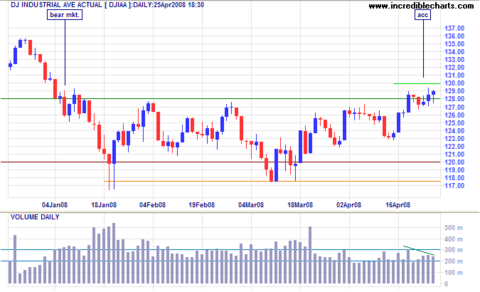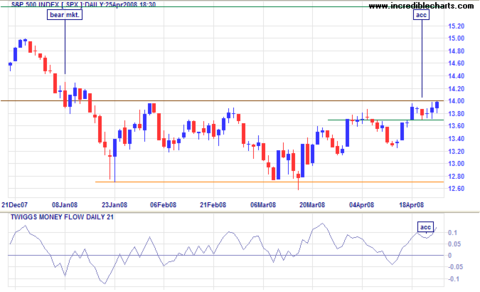Big Money Is Betting on Inflation, Not the Economy
Investors may wonder how the market can possibly rally when the economy resembles a punch-drunk boxer hanging on the ropes. The answer is fairly simple: the big money is not betting on the economy it is betting on inflation.
The Fed is printing money as fast as it can — in order to save the banking system from annihilation. Nobody gets up off the canvas without assistance after taking a 1 trillion dollar sock on the jaw. While the Fed can provide liquidity, there is only one way to protect banks from falling asset prices which threaten to wipe out their reserves. That is to create inflation — to reverse the fall in asset prices.
Investors and financial markets response to low interest rates from the Fed is to borrow all that they can and invest in real assets in anticipation of rising prices. This becomes a self-fulfilling prophecy as demand for real assets exceeds supply, driving up prices... and the next asset bubble is born.
The Fed does not mind, as investors mop up surplus money in the system and prevent it from flowing through to consumption — where it would affect consumer prices. Economists thought that they had found the holy grail. They could stimulate the economy without any significant impact on consumer prices. Only to discover that it is a poison chalice. There is no quarantine fence around asset bubbles and eventually higher asset prices flow through to consumers. When average workers can no longer afford to buy their own home, upward pressure on wages starts to rise. And when asset bubbles burst, as they are prone to, causing severe shocks to the economy, the Fed's only available response is to... you guessed it ... print more money and start the next asset bubble. The ever-increasing shocks are eroding the ability of the economy to recover and grow in a stable, predictable environment.
So where is the next asset bubble likely to occur? With wounds from collapse of the housing bubble still fresh, there are only two viable alternatives: stocks and commodities.
Inflation targeting by central banks is a major cause of bubbles. Inflation targeting is based on CPI which is a poor measure of the loss of purchasing power of the dollar. Why have house prices doubled in the last 5 years if inflation is averaging between 2 and 3 percent? Not to mention gold, oil and most other commodities. By using CPI as a measure, the Fed responds to crises long after the real damage is caused. Ever tried to steer your car while looking through the rear window to see where you are going? No wonder the Fed crashes into the sidewalk every time they encounter a bend in the road.
If you believe this is all too complicated and best left to a bunch of academic economists and self-interested bankers to sort out, allow me to remind you that the definition of stupidity is to repeat the same action and expect a different result.
Dow Jones Industrial Average
The Dow retreated on Friday morning but rallied towards the close, ending near the day's high at 12900. Failure to react to bad news is a bullish sign — as is a short retracement at the resistance line (12800). Low volumes, however, indicate that the rally does not result from buying pressure, but rather from the absence of sellers — warning us to proceed with caution.
S&P 500
The S&P 500 is testing resistance at 1400. Breakout would offer a medium-term target of 1500 — and confirm the Dow Industrial and Transport Averages signal. Twiggs Money Flow trough high above zero indicates strong short-term buying pressure.




Nenhum comentário:
Postar um comentário